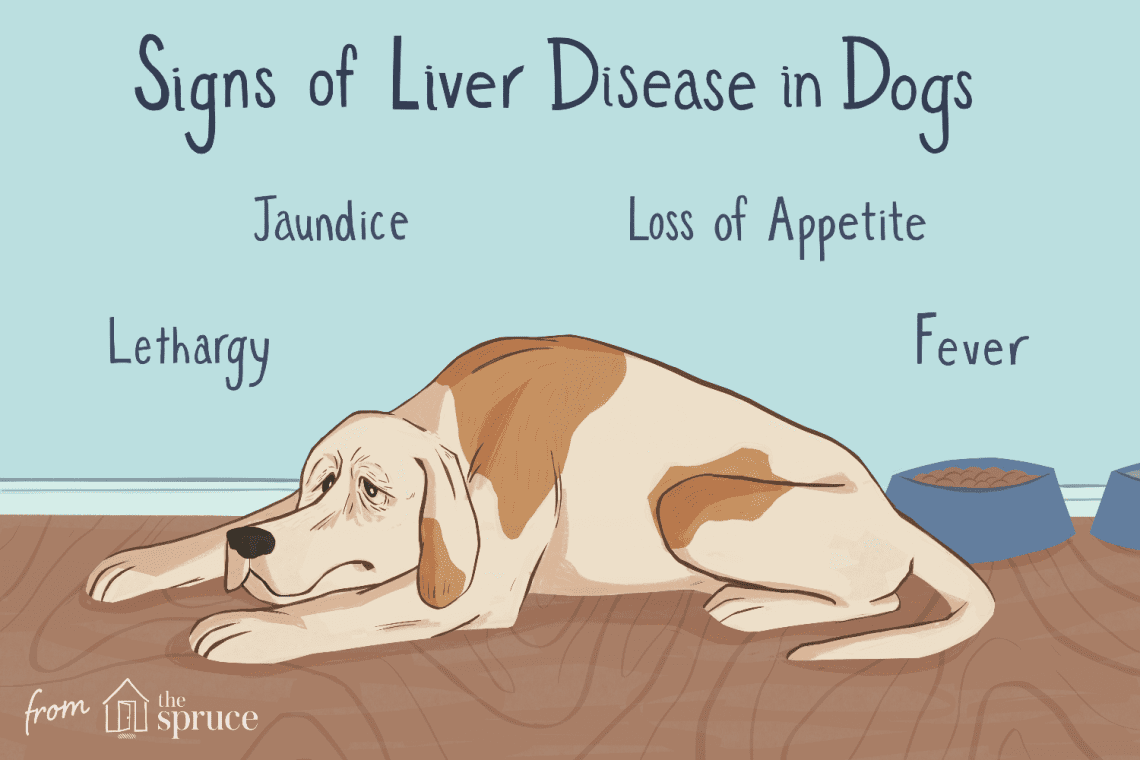
Signs, Causes, and Treatment of Liver Disease in Dogs
Contents
Relevant graphic content
- normal liver
- End stage liver disease
- hepatic neoplasia
What is liver disease?
The liver is a vital organ responsible for breaking down and converting nutrients, removing toxins from the blood, and building a supply of vitamins and minerals. Due to the constant “work” with toxic substances, the liver is prone to various diseases. In addition, diseases of other organs also affect liver function.
These violations are diverse, fleeting and often dangerous to the pet’s life.
What liver diseases do dogs suffer from?
Hepatitis
Hepatitis, an inflammation of the liver in which healthy liver cells are replaced by scar tissue, can lead to loss of organ function. It can be infectious or toxic in nature, fulminant, acute or chronic.
Cancer roasted
Oncological disease of this organ is severe, with exhaustion, disruption of the nervous system, convulsions. The mechanism of the disease is still being studied, but it has already been established that the risk is higher with helminthic invasion in the liver, chronic inflammation of the gallbladder, and also in older animals.
Cirrhosis In this disease, the tissue of the organ is increasingly replaced by scar tissue, nodes appear in it. Over time, the structure of the liver changes completely and irreversibly. Cirrhosis in dogs can be the result of hepatitis, metabolic disorders, endocrinological pathology, unbalanced nutrition, lack of vitamins.
Fibrosis The disease is similar to cirrhosis, but it is reversible: with fibrosis, liver tissue can be restored. If left untreated, the disease will progress to cirrhosis.
Liver dystrophy This disease can take a fatty or amyloid form. With fatty degeneration, fat accumulates in the liver tissues, with amyloid – a pathological protein. Both forms can lead to malfunctioning of the entire body and require immediate treatment by a veterinarian.
Portosystemic shunts
A non-inflammatory, congenital liver disease, in which pathological vessels are observed in the organ: they mix purified blood with contaminated blood and, as a result, contribute to the constant intoxication of the dog’s body.
Fortunately, liver diseases can be effectively controlled and their progression stopped. Many dogs continue to live happily years after their diagnosis. The key to success is proper nutrition and constant dialogue with the veterinarian.
What causes liver disease in dogs?
Factors that may increase the risk of liver disease in dogs include:
Age.
Some diseases, including liver dysfunction, are more likely to affect older animals.
Breed.
Dobermans, Rottweilers, Yorkshire Terriers and Cocker Spaniels are more likely than others to have congenital liver disease or are prone to developing it.
- Some breeds, such as Bedlington Terriers and West Highland White Terriers, are prone to abnormal copper metabolism. This can affect the dog’s liver or cause copper-associated hepatitis. This genetic predisposition leads to the development of chronic hepatitis in these breeds, characterized by the accumulation of copper in the liver.
- Chronic hepatitis in Doberman Pinschers is a hereditary copper-associated disease that affects bitches more often than males.
Taking medications.
Medicines containing acetaminophen can damage the liver of dogs. Other risk factors:
Viral and bacterial infections.
Poisonous substances that a dog could eat.
Changes in blood flow to the liver as a result of heart disease or other congenital anomalies.
Does my dog have liver disease?
Symptoms of a diseased liver can be very similar to signs of other diseases. If you notice any of the following conditions in your dog, contact your veterinarian for a complete examination of the pet.
Symptoms to look out for:
Poor appetite or loss of appetite.
Weight loss.
Jaundice (yellowing of the skin or whites of the eyes).
Thirst.
Vomiting or diarrhea.
Changes in behavior.
Excessive salivation.
Loss of energy or depression.
Other possible symptoms of liver disease in dogs include:
the appearance of dark urine;
- pale gums;
- accumulation of fluid in the abdominal cavity, which can be mistaken for a sudden weight gain. The veterinarian will prescribe special examinations for diagnosis.
IMPORTANT. The symptoms of liver disease are not very specific, making it difficult to diagnose. If your dog refuses to eat, contact your veterinarian immediately.
Treatment: the importance of nutrition
If your dog has liver disease, you are probably wondering how to care for it. The treatment of any liver disease is aimed at giving the body a rest, minimizing those functions that are associated with the processing of fats, proteins, carbohydrates and drugs.
For dogs of those breeds that have a genetic predisposition to the accumulation of toxic amounts of copper in the liver, control of dietary copper intake is indicated. But the basic rule for all ill pets and their owners is the right diet.
Always consult your veterinarian for an accurate diagnosis and treatment options. Ask him to recommend the best food for you, taking into account the characteristics of the dog’s condition.
Liver Health Questions to Ask Your Veterinarian:
1. Are there foods that should not be given to a dog to keep his liver healthy?
• Ask how human food can affect a dog’s health.
2. Would you recommend Hill’s Prescription Diet for my dog’s liver health?
Find out:
• about special foods for your dog;
• portion sizes and frequency of feeding recommended foods;
• what treats you can give your dog with the recommended food.
3. How soon will the dog show signs of improvement?
4. Can you provide me with a written instruction or leaflet about liver health?
5. How can I contact you or the veterinary clinic if I have questions (email/phone)?
Ask:
• Whether your dog needs follow-up.
• Whether a notification or email reminder will be sent.
• Prevention of liver disease in dogs
To prevent liver diseases, follow a few simple rules:
1. Vaccinate your pet in time.
2. Regularly carry out antiparasitic treatment.
3. Monitor the condition of the dog: at the slightest suspicion, contact a specialist.
4. Choose and observe the optimal diet for your pet: do not overfeed him, do not indulge requests to treat him to something illegal. For feeding, choose complete, balanced formulations that will provide the animal with everything it needs.





